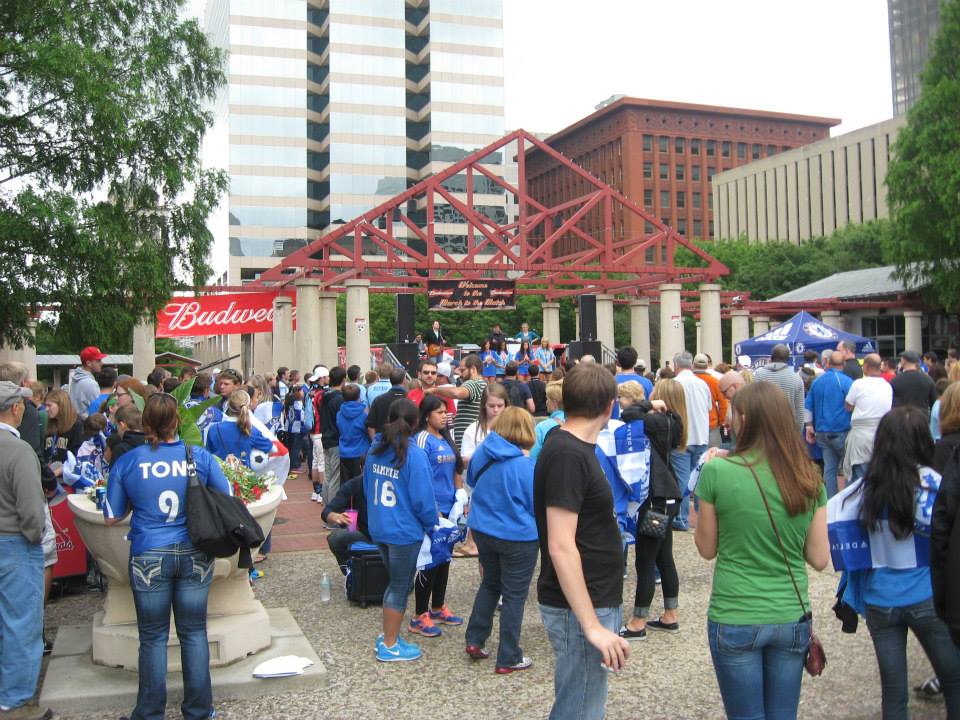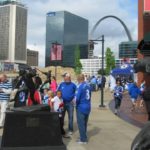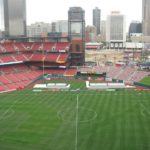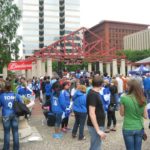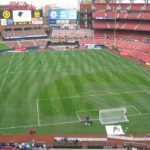Nathan Tucker
nrtucker@lc.edu
In this latest dive into classic contests of sport past, we go back to Thursday, May 23, at Busch Stadium. Usually, this would be the time for one of at least 81 Cardinals games over a given baseball season, but on this evening, Premier League soccer took over Busch Stadium and downtown St. Louis as a whole. A massive crowd of 48,263 flocked to the city to watch Chelsea and Manchester City square off in a special postseason showcase match. To date, the crowd is the second largest in Busch Stadium history, beating every single Cardinals playoff or World Series appearance in the process.
St. Louis has had the proud reputation for being a soccer hub or capital of the game in the US, even without a representative in MLS (yet!) The very first fully professional soccer league in the country was the St. Louis Soccer League, formed in 1907, and less than professional leagues were going in the 1800s. Crowds ranging from 1,000 to 10,000 packed the stadiums of Cardinals past, Robison Field and Sportsman’s Park, to support their neighborhood sides.
At the height of Saint Louis University’s run on top of the NCAA soccer world, their contests were drawing thousands, with their cross-river rivalry games with SIU-Edwardsville for the prized “Bronze Boot” drawing over 15,000 spectators to the old Busch Stadium. The 1980 meeting drew 22,512, which still stands as an NCAA soccer record.
Jumping back to that May 2013 evening, the crowd was roughly split into quarters: a quarter Chelsea supporters, a quarter City, a quarter who were just there because it was the biggest soccer game the city had seen since Pele came to town and a quarter who were there to see one man. That one man? Manchester City striker Edin Dzeko. Dzeko, at the time, was a star for the Bosnian national team. The Bosnian national team is likely more popular than the US team in St. Louis.
There are more Bosnians in St. Louis than any other city outside of Europe. Many are refugees from the Bosnian War that ravaged the nation in the 90s. Per 2013 count, there’s over 70,000 Bosnians in the city, mostly in the Bevo Mill neighborhood of south St. Louis, and other towns in south St. Louis county. The Bosnian fans turn out in great numbers for their team and players. Many of the blue shirts in the stands weren’t Chelsea’s royal blue or Manchester City’s sky blue. They were the deep blue of the Bosnian team, with “DZEKO 10” emblazoned on their backs.
Chelsea and City were just over two weeks removed from wrapping up their long season in England. City finished second in the Premier League, and Chelsea right behind them in third. Manchester United won the league that year behind the cultured left foot of Robin van Persie.
Chelsea’s season wrapped up slightly later than City’s, as they were competing in the UEFA Europa League Final in Amsterdam just twelve days prior to the May 23rd clash. Chelsea defeated Lisbon’s Benfica 2-1 in the final, and even brought the Europa League trophy with them for fans to take pictures with.
The game itself was a roller-coaster affair. Chelsea jumped out to a massive three goal lead, thanks to two from Brazilian midfielder Oscar and one from defender Cesar Azpilicueta. At halftime, it was all Chelsea, and those wearing that specific shade of blue in the stadium were living in dreamland. City proved their quality in the second half. More importantly, Edin Dzeko showed off in front of a crowd that was longing to see him. The Manchester City striker scored twice in the final 45 minutes, leading his team to a 4-3 victory in the showcase.
“I think it was an exhibition game with everything, with so many chances up and down, and seven goals in the end,” said Chelsea goalkeeper Petr Cech to Tom Timmerman of the St. Louis Post-Dispatch following the game. Cech came out of the game in the 61st minute with a 3-0 lead. “I’m a bit disappointed because we lost the game in the end, but in terms of entertainment for the people, which was fantastic to see so many people coming to the stadium to watch the game, they had a pretty interesting evening.”
Soccer came calling to St. Louis after this match. After the area’s soccer faithful showed that they would come out in numbers for the sport, pressure was put on MLS to add St. Louis to its already ever-expanding league. A pro team, Saint Louis Football Club, was founded in 2014 in what was then named the United Soccer League, and still play today in the same league, now known as the USL Championship.
Saint Louis FC’s continued support — despite playing fifteen miles from downtown St. Louis — kept the city on MLS’s radar, and the highest level of American soccer is finally coming to the Gateway To The West in 2022.
Will MLS ever match the hype Chelsea and Manchester City created at Busch? Can MLS replicate the energy and atmosphere of seeing two of the world’s biggest clubs squaring off in one of the nation’s most iconic stadiums?
We’ll just have to wait till 2022 to find out.


